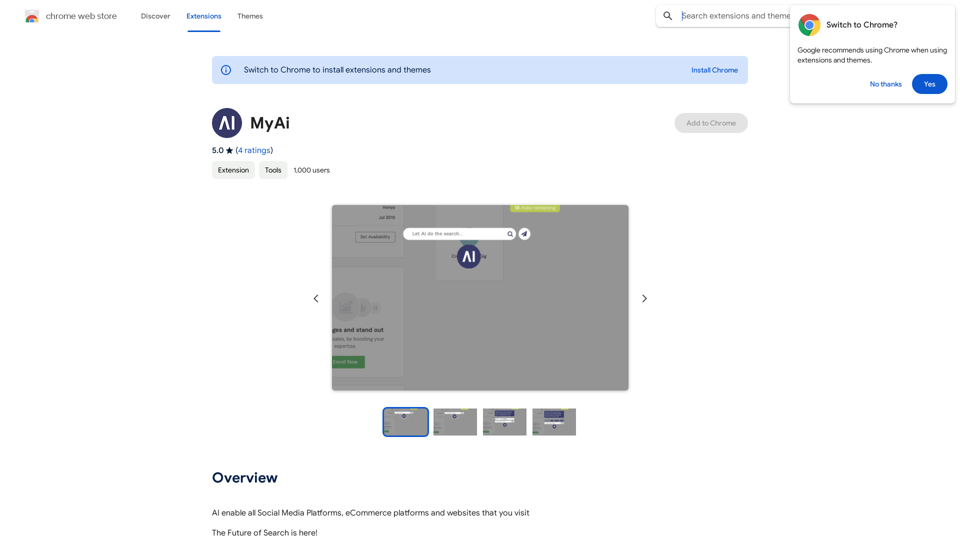Komiko is an AI-powered platform designed for creating comics, webtoons, and visual stories. It offers users the ability to design original characters and explore infinite story worlds, making it an ideal tool for both amateur and professional storytellers.
Komiko | Create Comics and Webtoons with AI
Bring your stories to life with AI. Create captivating comics, webtoon, and visual stories. Design original characters and dive into limitless story worlds.
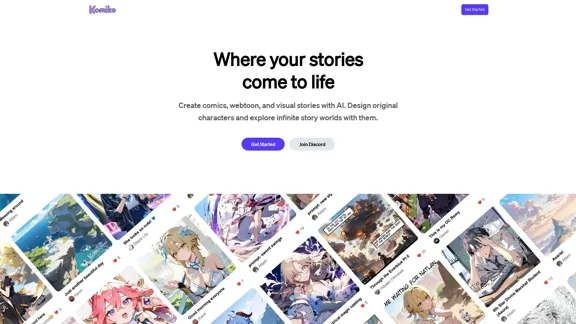
Introduction
Feature
-
AI-Powered Creation
- Utilizes artificial intelligence to assist in comic and webtoon creation
- Enables users to design original characters with AI assistance
-
Infinite Canvas
- Provides an unlimited digital space for storytelling
- Allows for flexible and expansive comic layouts
-
Character Consistency
- Ensures characters maintain their appearance across different scenes
- Helps in creating cohesive visual narratives
-
Roleplay Scenarios
- Offers the ability to explore various storylines with created characters
- Enhances storytelling by allowing character interaction in different contexts
-
Community Stories
- Features a section for users to explore stories created by the community
- Encourages sharing and inspiration among users
-
Interactive Story Experiences
- Presents pre-made scenarios for users to engage with
- Includes a variety of genres and themes for diverse storytelling options
FAQ
What is Komiko?
Komiko is an AI-powered platform for creating comics, webtoons, and visual stories. It allows users to design original characters and explore infinite story worlds.
Can I create my own characters with Komiko?
Yes, Komiko enables users to design original characters using AI assistance, ensuring consistency across different scenes and stories.
What types of stories can I create with Komiko?
You can create a wide range of visual stories, including comics and webtoons. The platform offers an infinite canvas for storytelling and various roleplay scenarios to explore.
Is there a community aspect to Komiko?
Yes, Komiko features a section where users can explore stories created by the community, fostering inspiration and sharing among creators.
Evaluation
-
Komiko's AI-powered approach to comic and webtoon creation is innovative, potentially lowering the entry barrier for aspiring visual storytellers.
-
The infinite canvas feature is particularly appealing, offering flexibility that traditional comic formats may not provide.
-
Character consistency across scenes is a significant advantage, addressing a common challenge in visual storytelling.
-
The inclusion of pre-made scenarios and community stories adds value, providing inspiration and interactive experiences for users.
-
While the AI assistance is promising, the platform's effectiveness may depend on the quality and versatility of its AI algorithms.
-
The success of Komiko will likely hinge on balancing AI assistance with user creativity, ensuring that the tool enhances rather than limits artistic expression.
-
More information on the customization options for characters and scenes would be beneficial to fully assess the platform's capabilities.
-
The platform's potential for educational use in storytelling and visual arts could be explored further.
Latest Traffic Insights
Monthly Visits
743.50 K
Bounce Rate
44.57%
Pages Per Visit
2.71
Time on Site(s)
123.79
Global Rank
67799
Country Rank
United States 43152
Recent Visits
Traffic Sources
- Social Media:13.76%
- Paid Referrals:0.85%
- Email:0.09%
- Referrals:7.57%
- Search Engines:39.08%
- Direct:38.63%
Related Websites
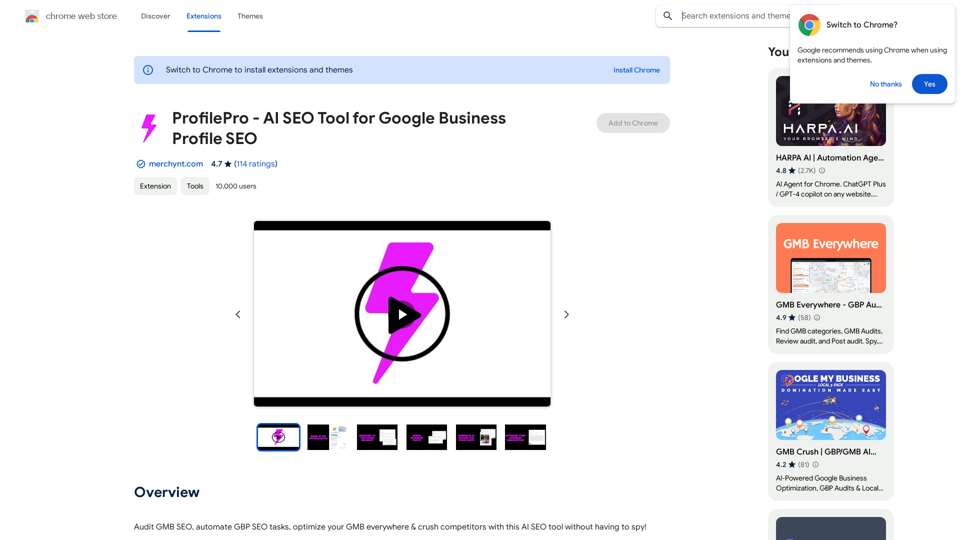
ProfilePro - AI SEO Tool for Google Business Profile SEO
ProfilePro - AI SEO Tool for Google Business Profile SEOAudit Google My Business SEO, automate Google Business Profile SEO tasks, optimize your Google My Business everywhere and outperform competitors with this AI SEO tool without having to spy!
193.90 M
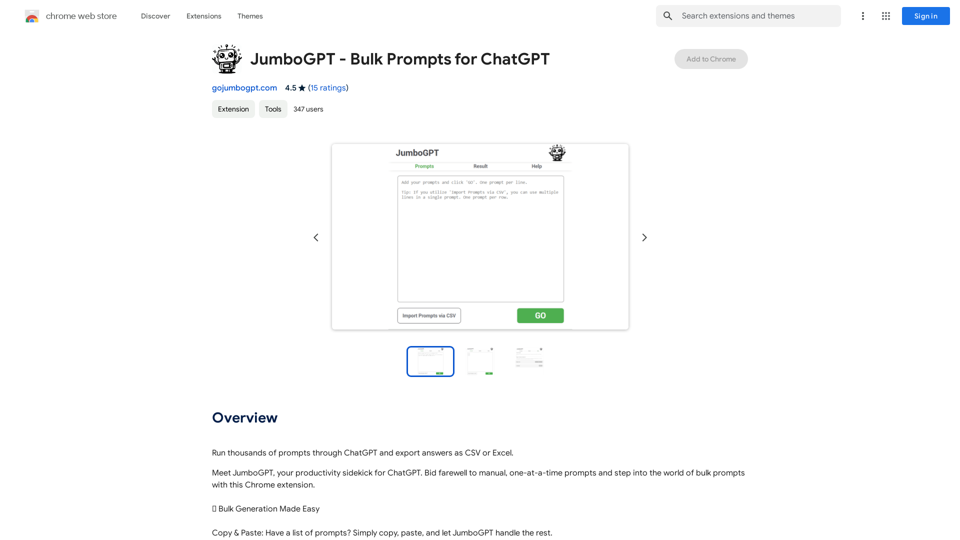
JumboGPT - Bulk Prompts for ChatGPT This is a collection of bulk prompts for ChatGPT, designed to help you explore its capabilities and generate diverse creative text formats. Instructions: * Each prompt is designed to be used individually with ChatGPT. * You can copy and paste the prompts directly into the ChatGPT interface. * Feel free to modify the prompts to suit your specific needs and interests. Categories: * Story Starters: > A lone astronaut stumbles upon a derelict spaceship... > The old woman sat on the park bench, watching the children play... > A mysterious package arrived on her doorstep, addressed simply to "The Keeper"... * Creative Writing: > Write a short poem about the feeling of nostalgia. > Compose a song about a robot who falls in love with a human. > Describe a world where animals can talk. * Dialogue Prompts: > Two friends argue about the best way to spend a weekend. > A detective interrogates a suspect in a murder case. > A parent tries to explain a difficult concept to their child. * Worldbuilding: > Create a detailed description of a fantasy city. > Design a new species of creature for a science fiction story. > Develop a unique magic system for a medieval world. * Code Generation: > Write a Python function to calculate the factorial of a number. > Generate HTML code for a simple webpage. > Create a SQL query to retrieve data from a database. * Humor: > Write a joke about a programmer. > Create a funny story about a talking cat. > Generate a list of puns about food. * Educational: > Explain the concept of photosynthesis in simple terms. > Summarize the main events of the American Revolution. > Provide a brief history of the development of the internet.
JumboGPT - Bulk Prompts for ChatGPT This is a collection of bulk prompts for ChatGPT, designed to help you explore its capabilities and generate diverse creative text formats. Instructions: * Each prompt is designed to be used individually with ChatGPT. * You can copy and paste the prompts directly into the ChatGPT interface. * Feel free to modify the prompts to suit your specific needs and interests. Categories: * Story Starters: > A lone astronaut stumbles upon a derelict spaceship... > The old woman sat on the park bench, watching the children play... > A mysterious package arrived on her doorstep, addressed simply to "The Keeper"... * Creative Writing: > Write a short poem about the feeling of nostalgia. > Compose a song about a robot who falls in love with a human. > Describe a world where animals can talk. * Dialogue Prompts: > Two friends argue about the best way to spend a weekend. > A detective interrogates a suspect in a murder case. > A parent tries to explain a difficult concept to their child. * Worldbuilding: > Create a detailed description of a fantasy city. > Design a new species of creature for a science fiction story. > Develop a unique magic system for a medieval world. * Code Generation: > Write a Python function to calculate the factorial of a number. > Generate HTML code for a simple webpage. > Create a SQL query to retrieve data from a database. * Humor: > Write a joke about a programmer. > Create a funny story about a talking cat. > Generate a list of puns about food. * Educational: > Explain the concept of photosynthesis in simple terms. > Summarize the main events of the American Revolution. > Provide a brief history of the development of the internet.Use ChatGPT to process many different questions and save the responses in a spreadsheet format like CSV or Excel.
193.90 M
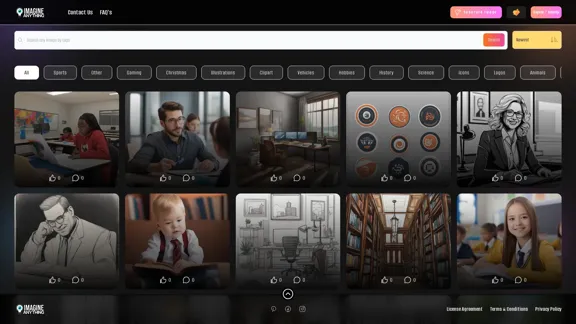
Generate Free AI Images with Imagine Anything. Easily create Photos, Clipart, Graphics and more with our AI Generator.
56.84 K
Create a Consistent Character Across Different Looks! Imagine this: * Your character rocking a cool new outfit. * Your character with a fresh hairstyle. * Your character in a variety of exciting backgrounds. But... * They always look like *themselves*. * Their personality shines through, no matter the change. That's where a Consistent Character Generator comes in! This powerful tool lets you: * Generate variations of your character with different: * Poses * Clothing * Hairstyles * Backgrounds * Maintain consistency in your character's appearance and essence. Say goodbye to: * Inconsistent character designs that break immersion. * Spending hours tweaking details to keep your character recognizable. Say hello to: * A library of diverse character variations, all true to your vision. * Effortless character customization for your projects.
Create a Consistent Character Across Different Looks! Imagine this: * Your character rocking a cool new outfit. * Your character with a fresh hairstyle. * Your character in a variety of exciting backgrounds. But... * They always look like *themselves*. * Their personality shines through, no matter the change. That's where a Consistent Character Generator comes in! This powerful tool lets you: * Generate variations of your character with different: * Poses * Clothing * Hairstyles * Backgrounds * Maintain consistency in your character's appearance and essence. Say goodbye to: * Inconsistent character designs that break immersion. * Spending hours tweaking details to keep your character recognizable. Say hello to: * A library of diverse character variations, all true to your vision. * Effortless character customization for your projects.Unlock your creative potential with the AI Consistent Character Generator. Effortlessly generate, customize, and transform characters with consistent features for photography, gaming, art, and more. Start your creative journey today!
37.98 K
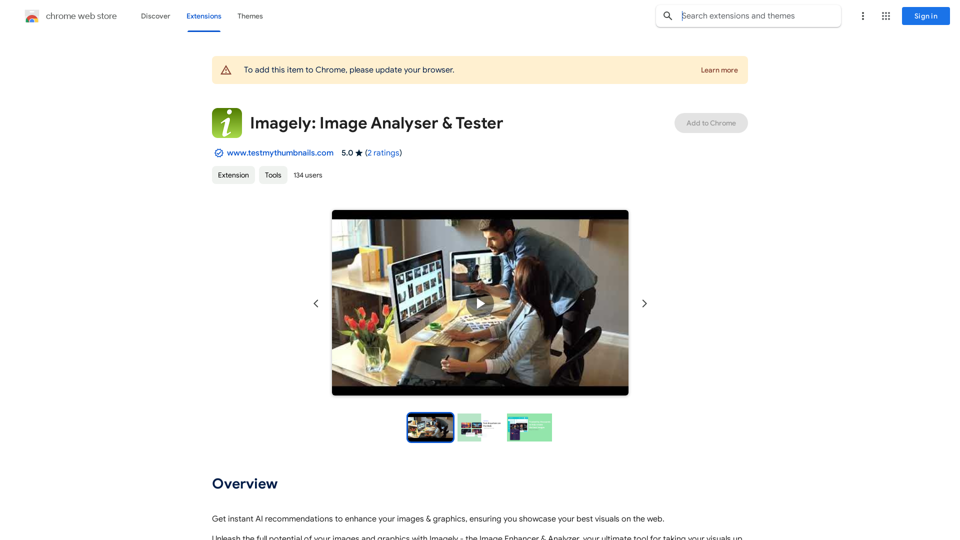
Get instant AI-powered recommendations to improve your images and graphics, so you can display your best visuals online.
193.90 M
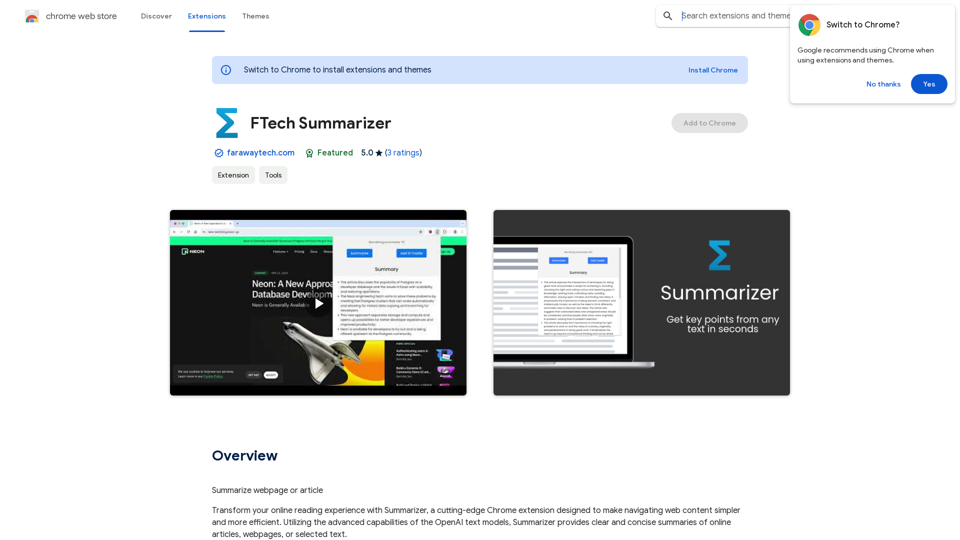
Please provide me with the webpage or article you would like me to summarize. I need the text content to be able to create a summary for you.
193.90 M
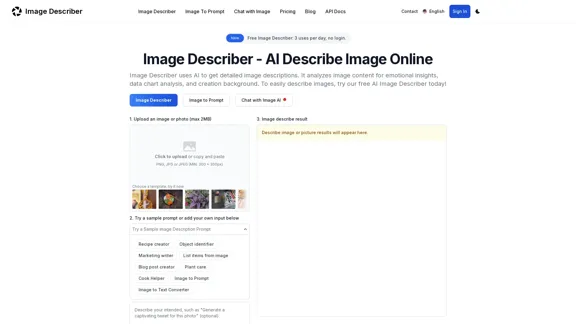
Image Describer - Free AI to Describe Images Online (No Login Required)
Image Describer - Free AI to Describe Images Online (No Login Required)Discover AI-Powered Image Descriptions with Image Describer. Gain Instant Insights and Unlock New Perspectives and Efficiency for Your Work and Creations. Join Us Today!
25.53 K
